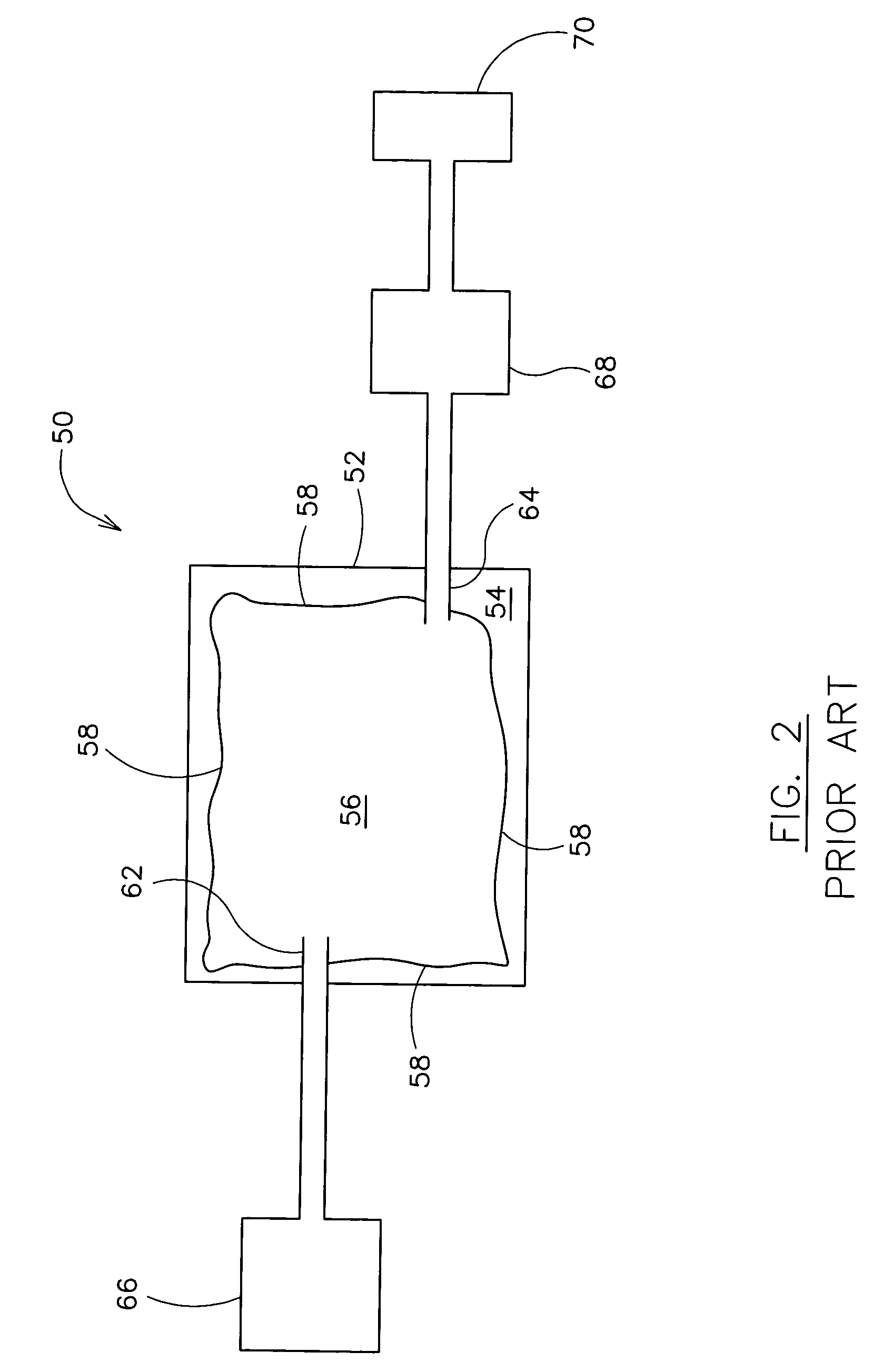Method for vacuum assisted resin transfer molding
a technology of resin transfer molding and vacuum assisted resin, which is applied in the field of vacuum assisted resin transfer molding, can solve the problem of low fiber volum
- Summary
- Abstract
- Description
- Claims
- Application Information
AI Technical Summary
Benefits of technology
Problems solved by technology
Method used
Image
Examples
Embodiment Construction
[0014]Referring now the to the drawings, and more specifically to FIG. 1, a composite structure is designated in its entirety by the reference numeral 20. The composite structure 20 is molded using a vacuum assisted resin transfer molding process and includes a body 22 having a plurality of fiber plies 24 stacked in face to face relation in a predetermined order and orientation. Each fiber ply 24 has a resin mixture (not shown) interspersed between a plurality of reinforcing fibers 28. For some applications, the composite structure 20 may include other materials, for example sheets of metal foil, stacked between the fiber plies 24. In one embodiment, the composite structure 20 is an aircraft component, such as, for example, an integrated stiffened structure for an aircraft wing (not shown), a sub-structure for an aircraft wing, a skin panel for an aircraft (not shown), or a control surface for an aircraft. However, it should be understood that the composite structure 20 may be any c...
PUM
| Property | Measurement | Unit |
|---|---|---|
| vacuum | aaaaa | aaaaa |
| thickness | aaaaa | aaaaa |
| structure | aaaaa | aaaaa |
Abstract
Description
Claims
Application Information
 Login to View More
Login to View More - R&D
- Intellectual Property
- Life Sciences
- Materials
- Tech Scout
- Unparalleled Data Quality
- Higher Quality Content
- 60% Fewer Hallucinations
Browse by: Latest US Patents, China's latest patents, Technical Efficacy Thesaurus, Application Domain, Technology Topic, Popular Technical Reports.
© 2025 PatSnap. All rights reserved.Legal|Privacy policy|Modern Slavery Act Transparency Statement|Sitemap|About US| Contact US: help@patsnap.com



